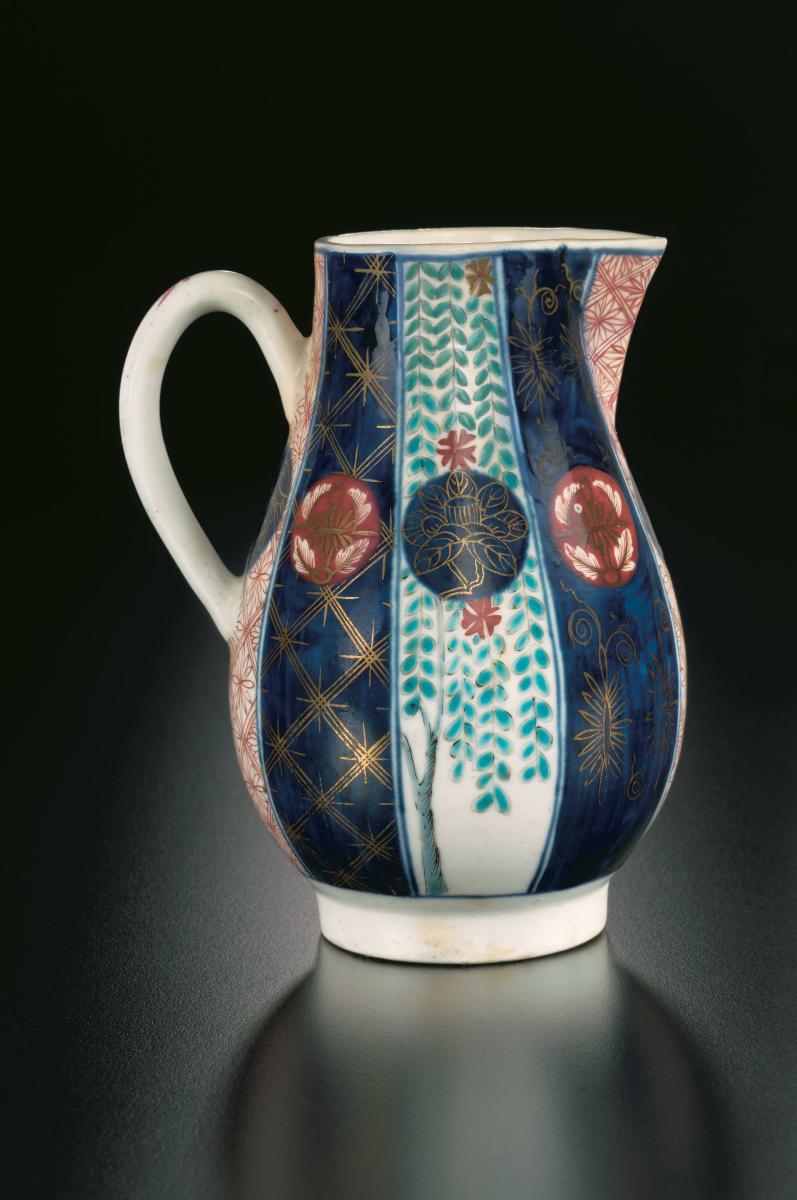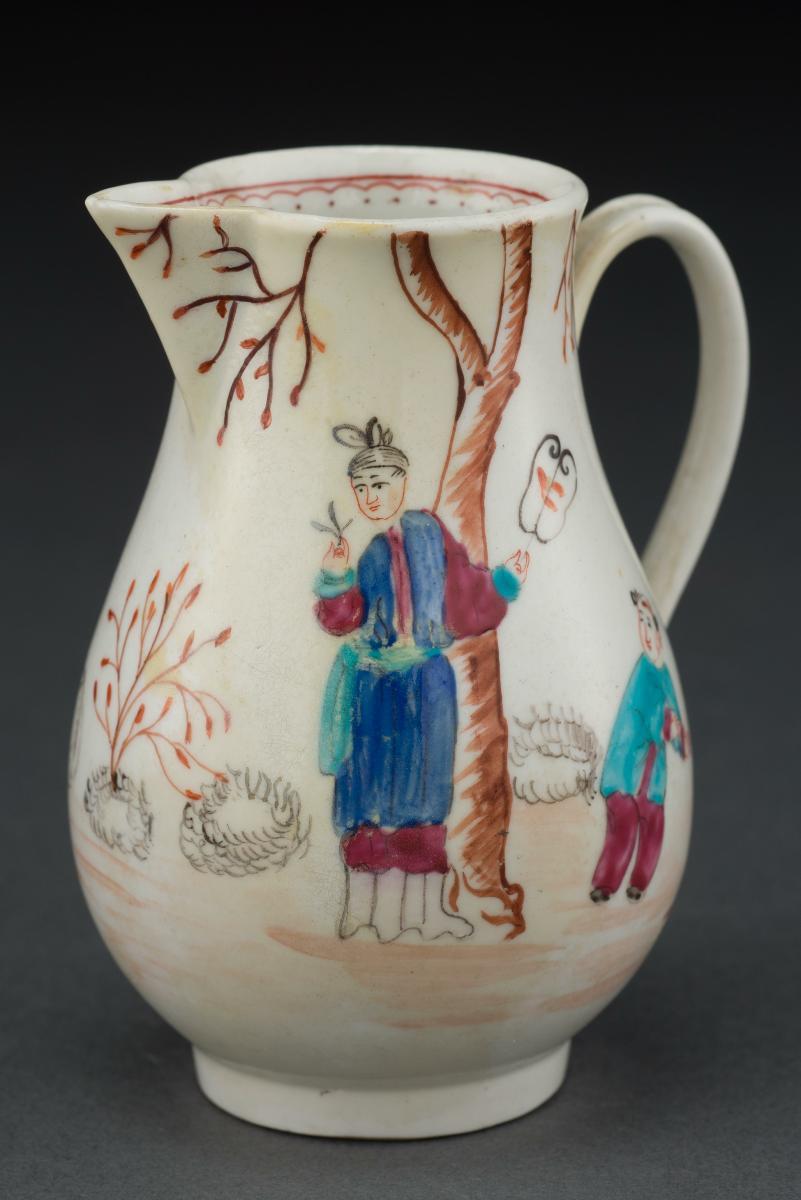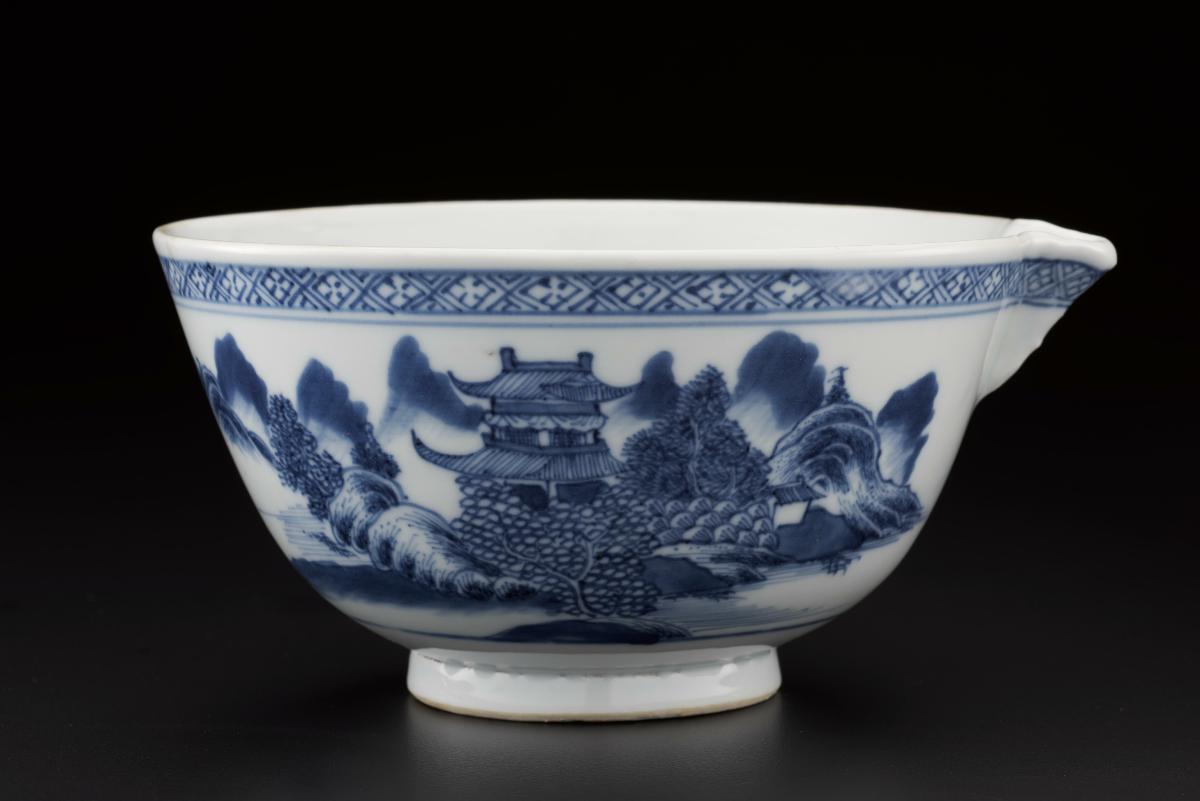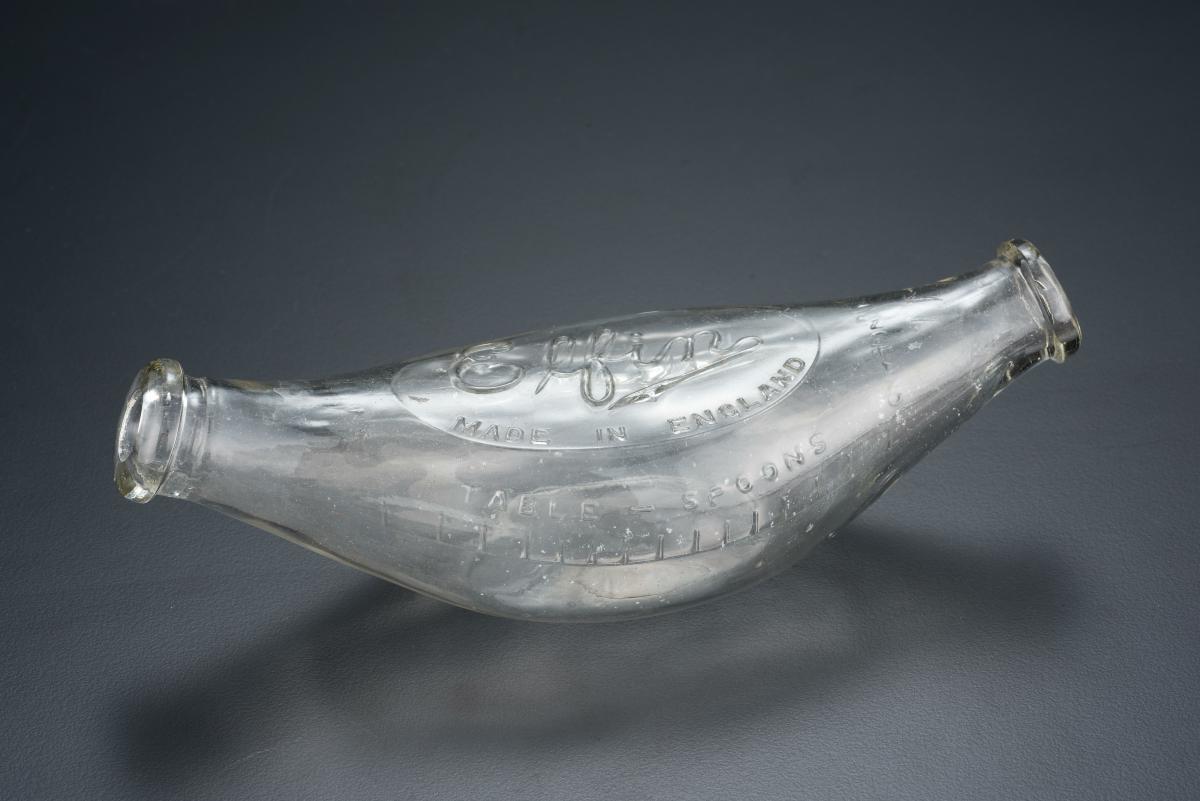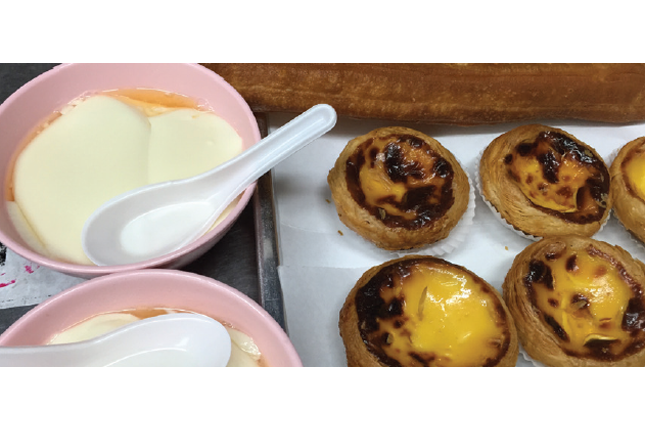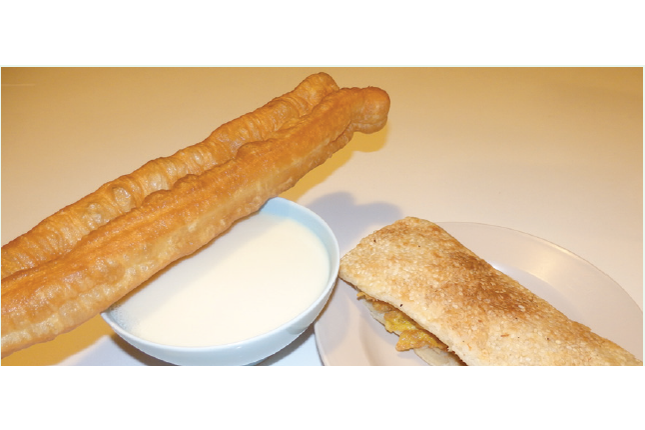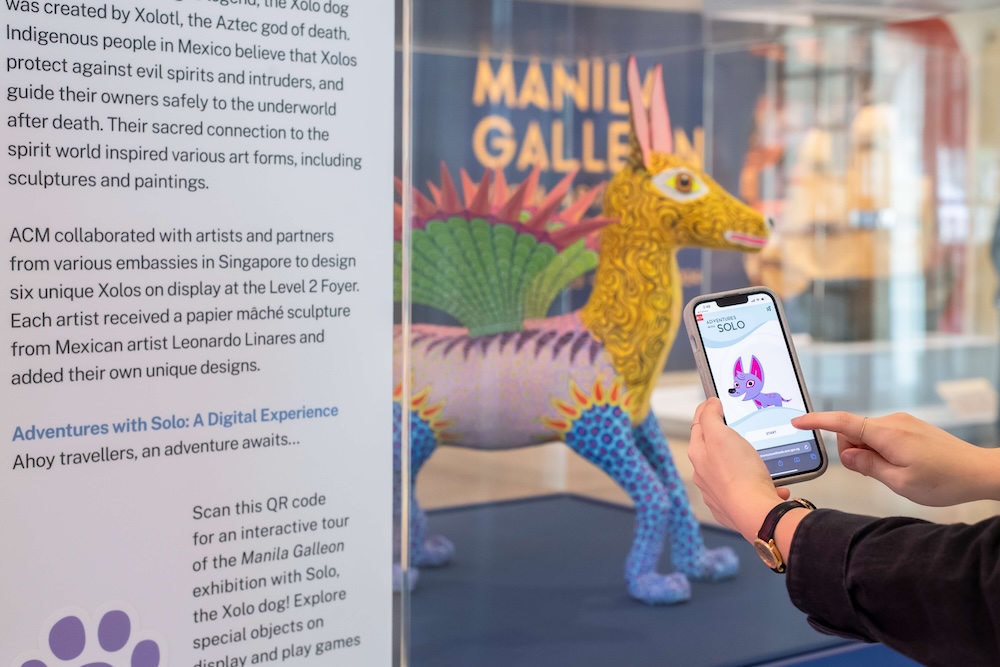This sparrow beak milk jug of pear shape has a loop handle. Decorated in the Japanese Imari style, it is richly painted with ‘mosaic’ patterns, which has panels of underglaze blue embellised with gilding, alternating with panels of floral and geometric motifs. Japanese porcelain first reached Europe around 1660. The Imari and Kakiemon styles had the greatest impact on European ceramics. Both kinds of porcelain were produced in the area of Arita in present-day Saga prefecture on Kyushu Island. Imari derived its name from the port from where it was shipped, while Kakiemon is named after the potter, Sakaida Kakiemon (1596-1666), who was reputed to have pioneered the use of colour enamels on porcelain in Japan. The range of enamels used on Imari wares is fairly wide but generally consists of blue, red and gold. In contrast to the heavily decorated Imari wares, Kakiemon designs show more restraint. Motifs are finely painted in translucent overglaze enamels with large undecorated areas highlighting the distinctive milky-white body. This jug could have been bought as part of a complete tea service or separately as a pair. A full tea service by the late 1760s would have comprised at least 40 pieces. Apart from multiple tea and coffee cups with matching saucers, other standard items included a teapot, sugar bowl, milk jug as well as a slop bowl (into which the dregs from tea and coffee cups were emptied).




